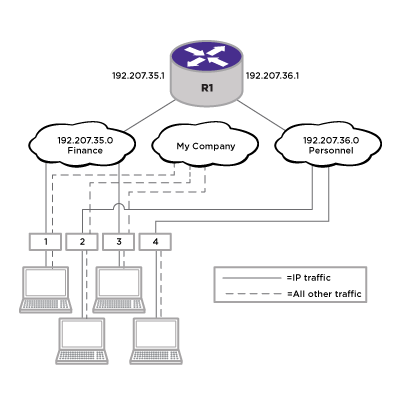Protocol-Based VLANs
Protocol-based VLANs enable you to define a packet filter that the switch uses as the matching criteria to determine if a particular packet belongs to a particular VLAN.
Protocol-based VLANs are most often used in situations where network segments contain hosts running multiple protocols. For example, in Protocol-Based VLANs, the hosts are running both the IP and NetBIOS protocols.
The IP traffic has been divided into two IP subnets, 192.207.35.0 and 192.207.36.0. The subnets are internally routed by the switch. The subnets are assigned different VLAN names, Finance and Personnel, respectively. The remainder of the traffic belongs to the VLAN named MyCompany. All ports are members of the VLAN MyCompany.

Predefined Protocol Filters
- IP (IPv4)
- IPv6 (11.2 IPv6)
- MPLS
- IPX
- NetBIOS
- DECNet
- IPX_8022
- IPX_SNAP
- AppleTalk

